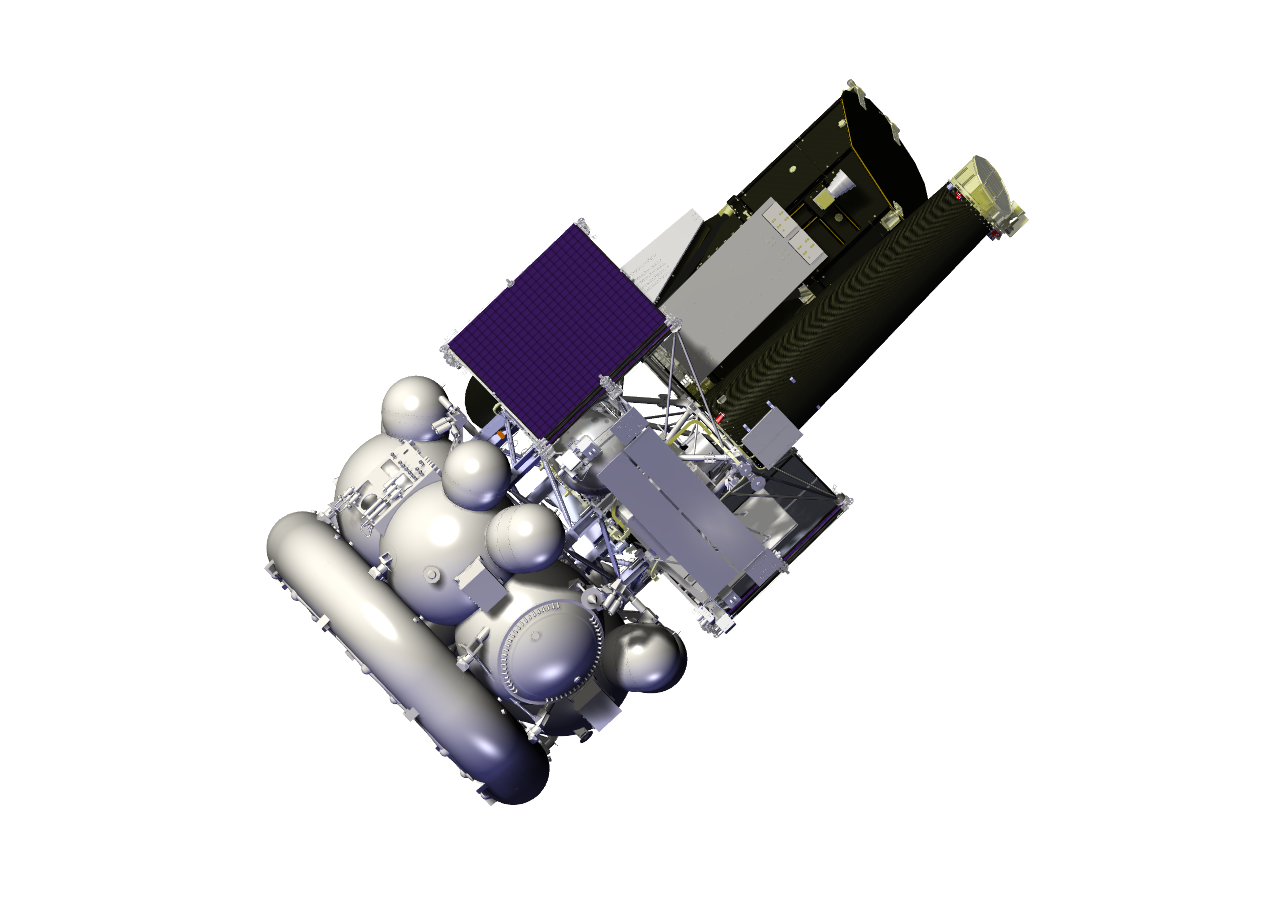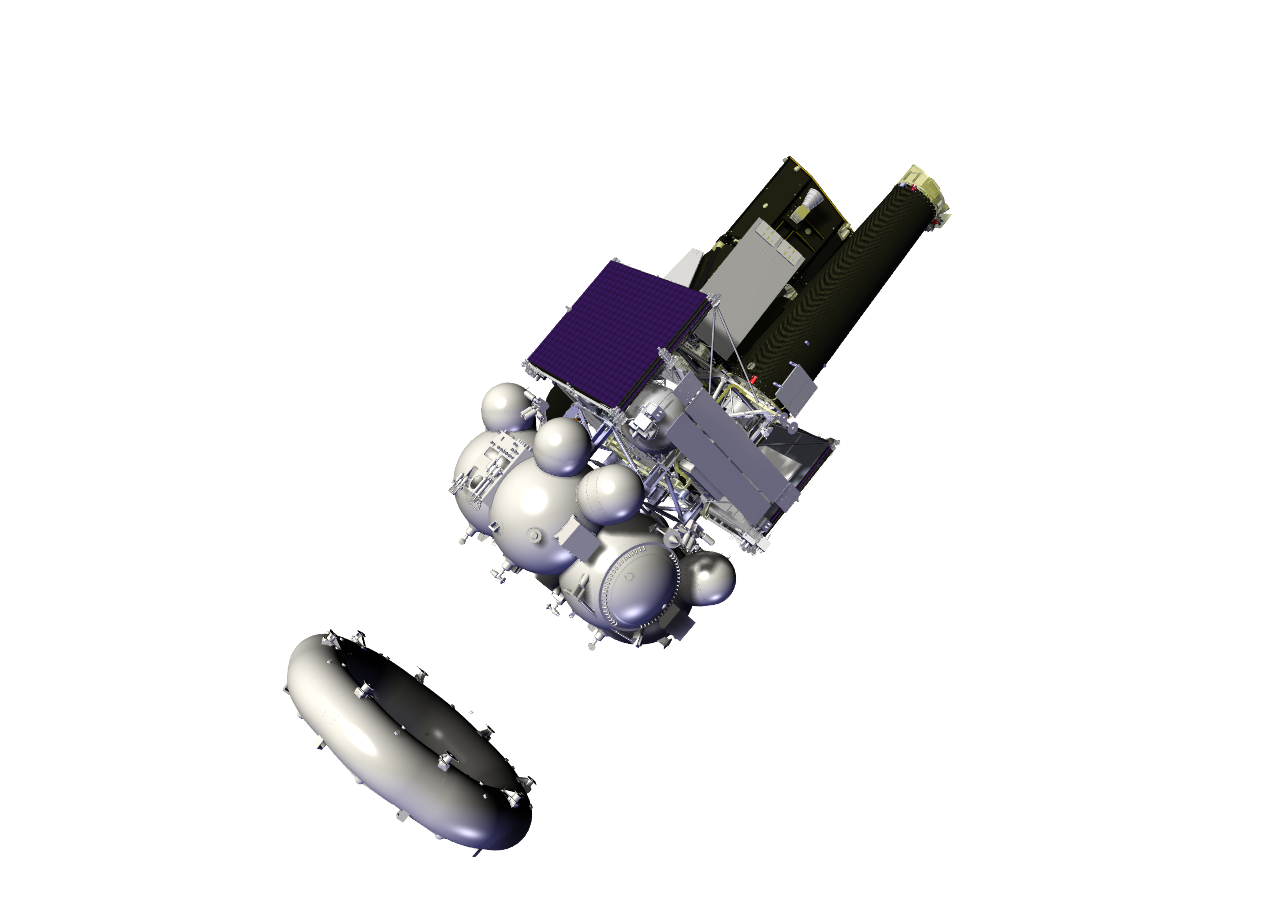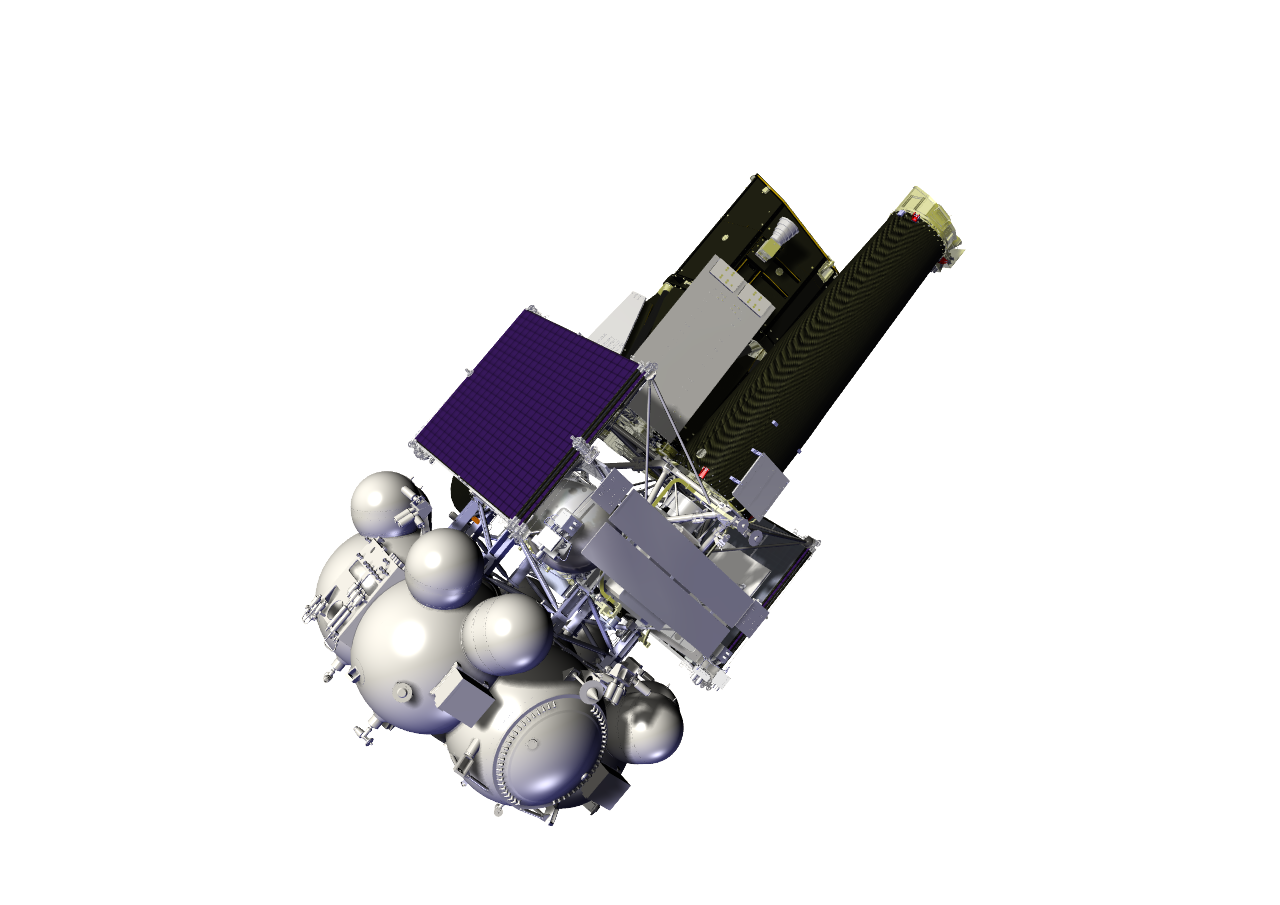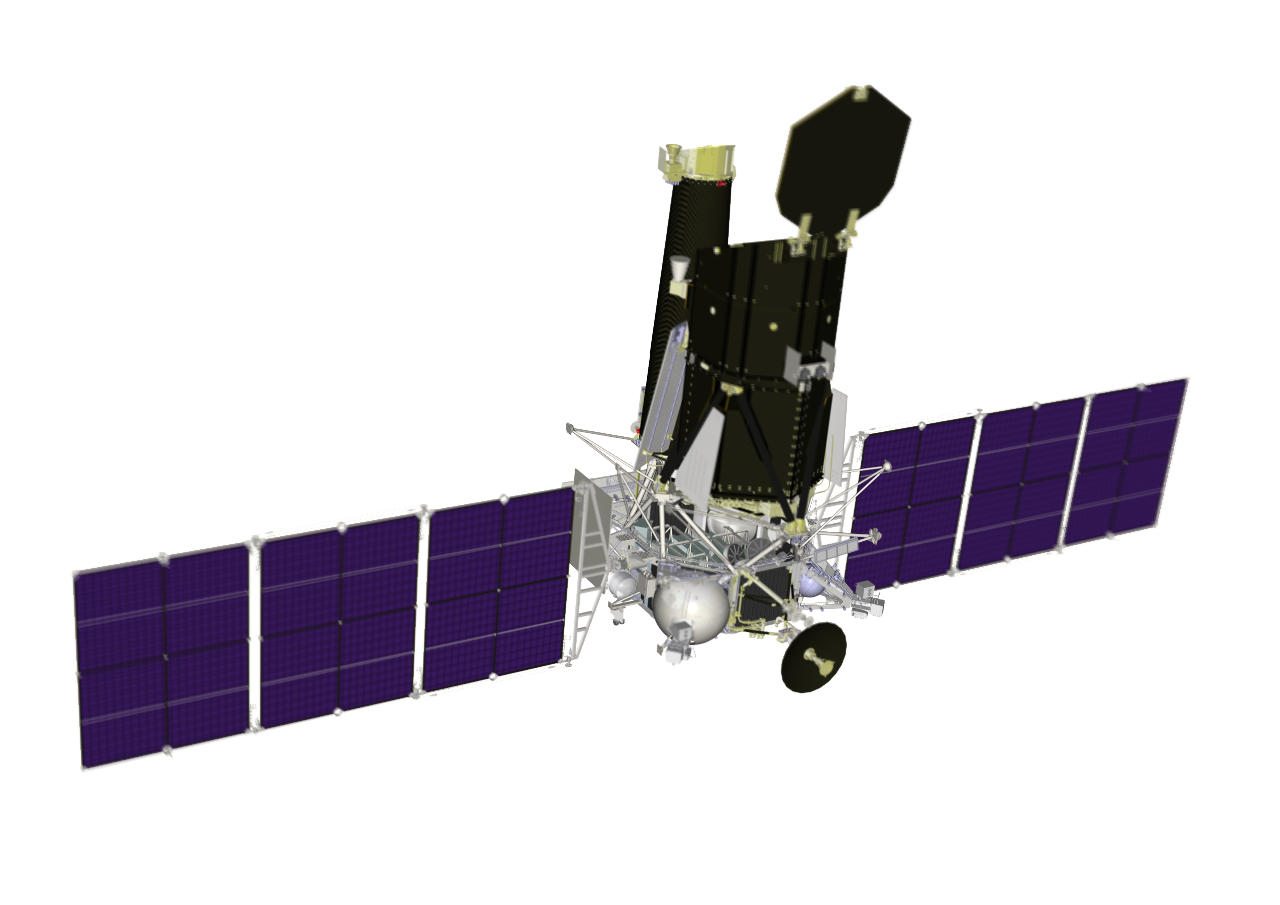Spectr-RG mission
Mission overview
Spectr-RG spacecraft is a space observatory designed to study Universe in gamma and X-ray bands. It should be injected and start its transfer to libration point orbit in the second half of 2017. Scientific instruments on board the spacecraft are made in Space Research Institute, Russian Academy of Sciences (spectroscope and X-ray telescope ART-XC), and in Max Planck Institute for Extraterrestial Physics (eROSITA telescope). Spacecraft platform Navigator and other hardware is produced and assembled at NPO Lavochkin.
Trajectory specifications
- Location: Sun-Earth L2 point
- Orbit type: Lissajous orbit
- Y-amplitude: 1000 000 km
- Z-amplitude: 600 000 km
- Transfer: one-impulse
- Mission duration: 7.5 years
- Orbit corrections: once in 45 days
-
Restrictions:
- no eclipses
- always visible from Russia-based tracking stations
Orbit view
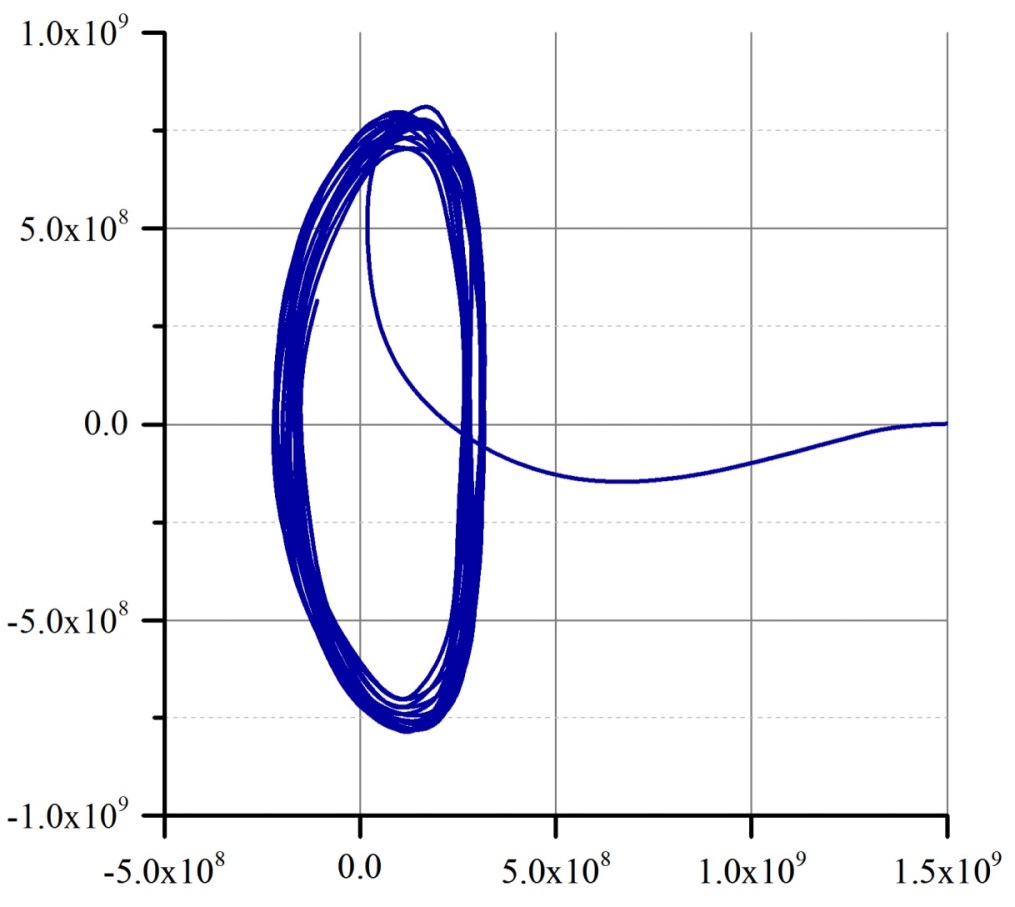
XY
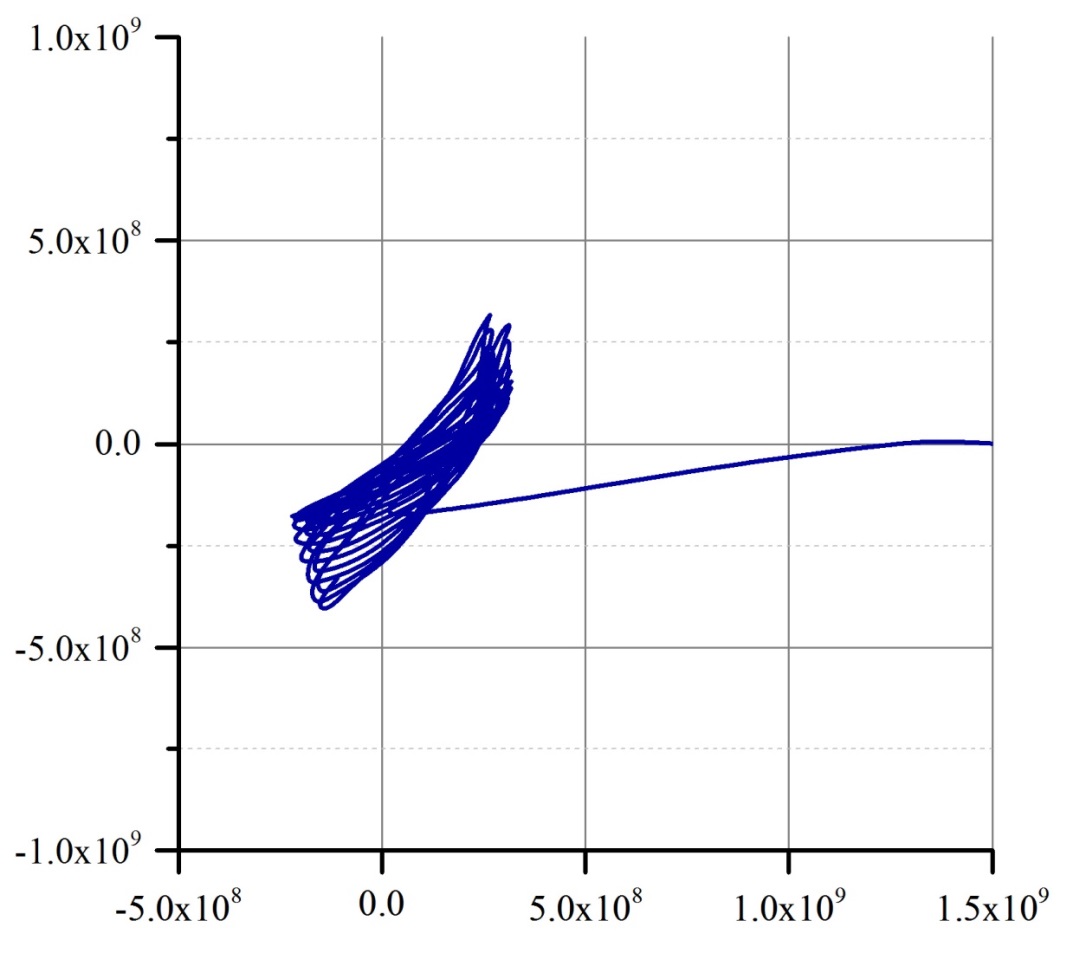
XZ
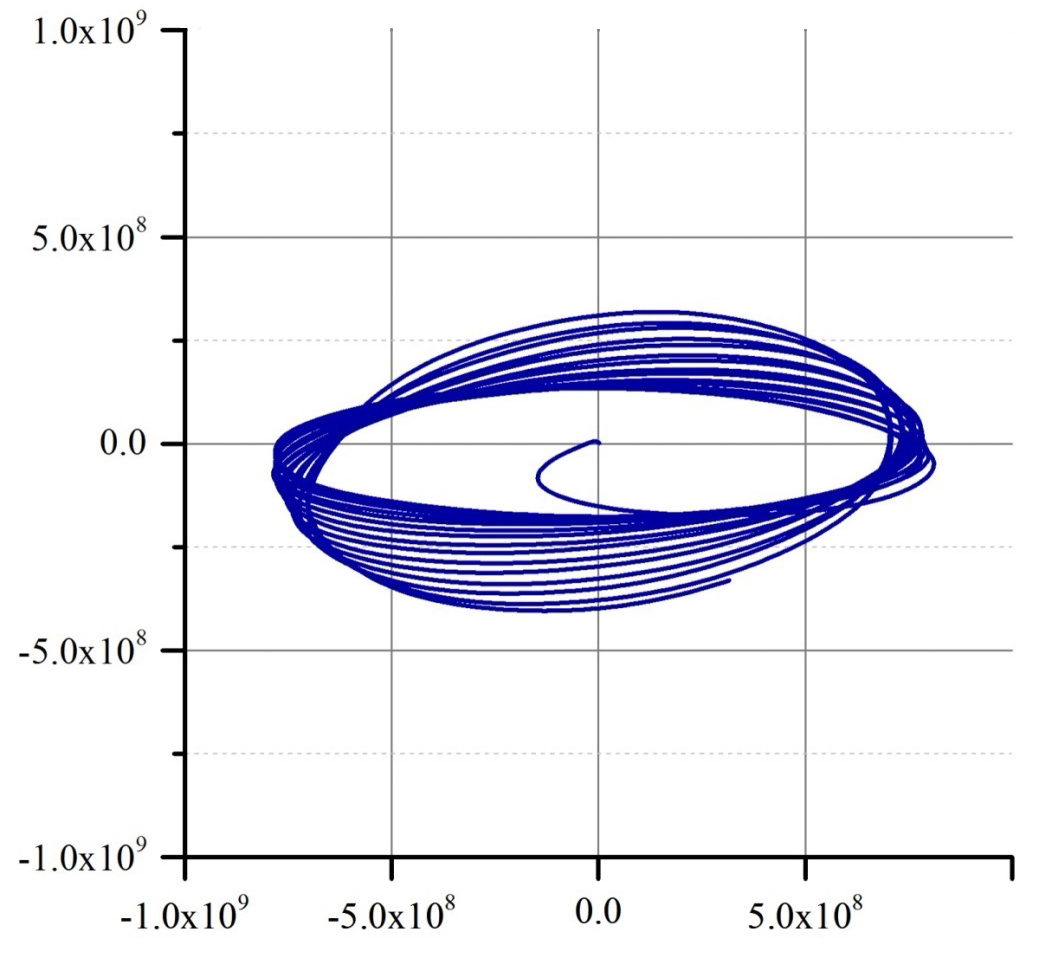
YZ
Trajectory projection on different planes of L2-centred rotating reference plane. All axis units are presented in km.
3D view
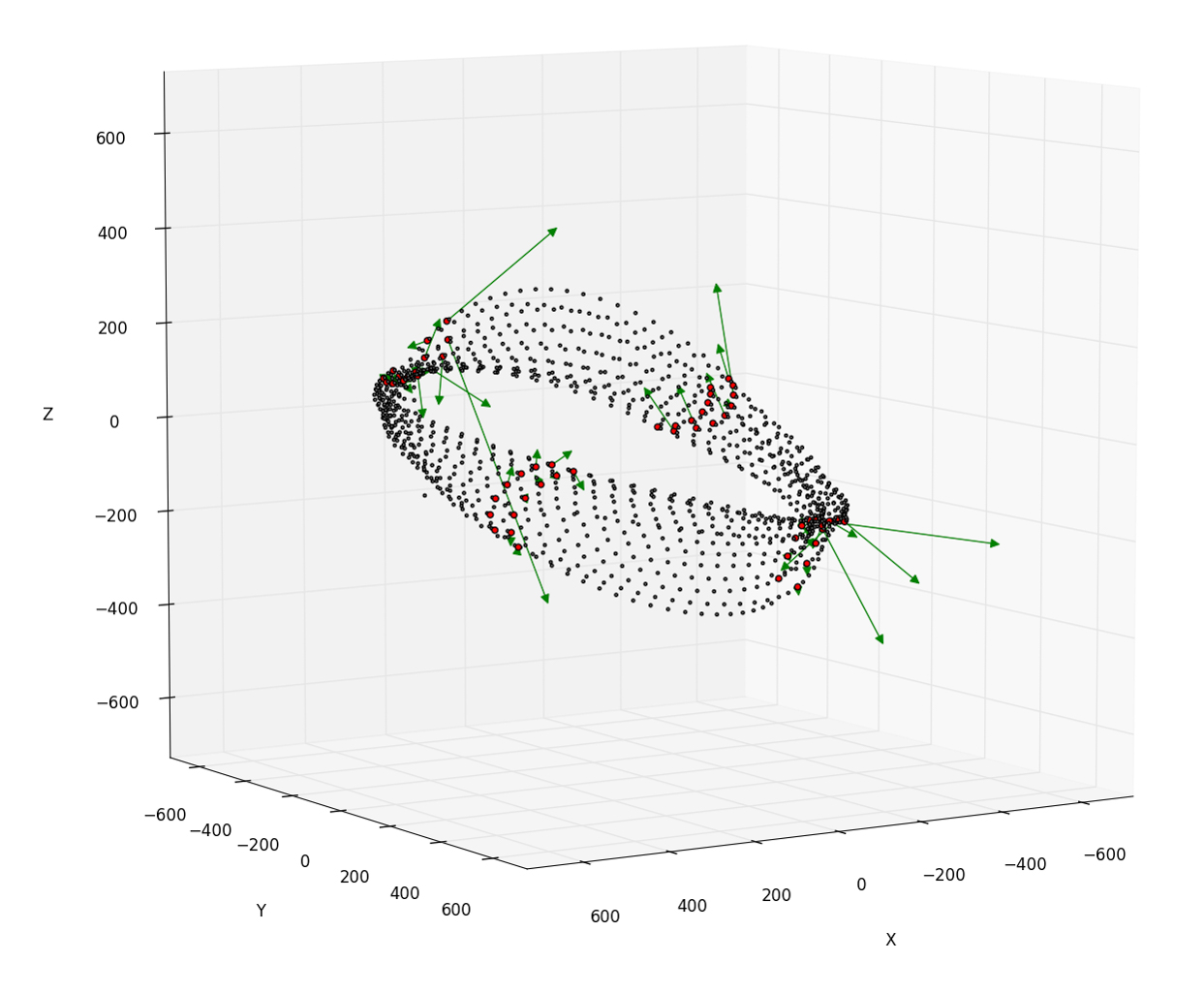
Stationkeeping impulses presented in green are multiplied by factor 10x9 in order to be noticable on the spacecraft trajectory plot. The original stationkeeping impulses have dimensions of 1 to 0.01 m/s.
Transfer to quasiperiodic orbit with Moon gravity assist
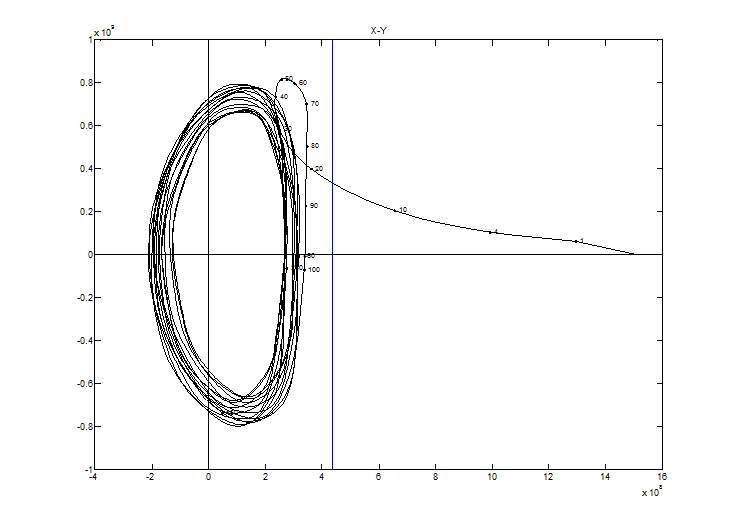
XY plane, no Moon gravity assist
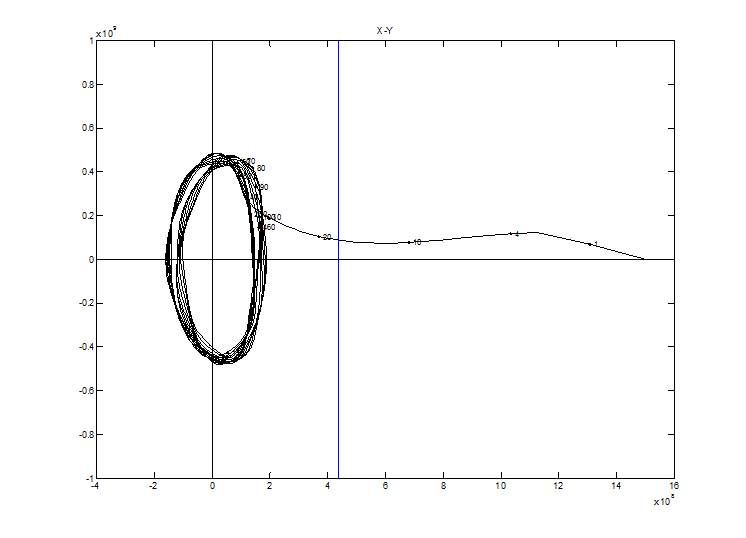
XY plane, with Moon gravity assist
Moon gravity assist manoeuvre performed during transfer gives extra delta V allowing spacecraft enter smaller amplitude quasiperiodic orbits wich is demonstrated at the pictures above. Both trajectories were obtained in full ephemeris model via numerical integration of motion equations. There was made a decision not perform gravity assist manoeuvre in order to increase mission robustness, however from the trajectory designer's point of view this is a cheap way to obtain smaller amplitude orbits around collinear libration points.
